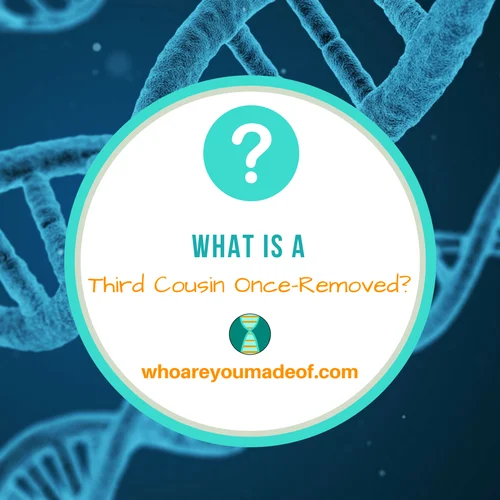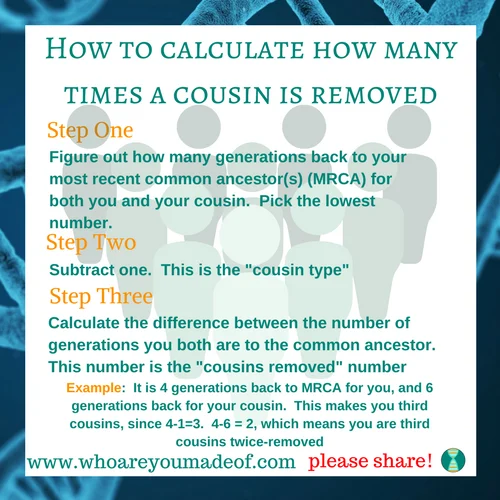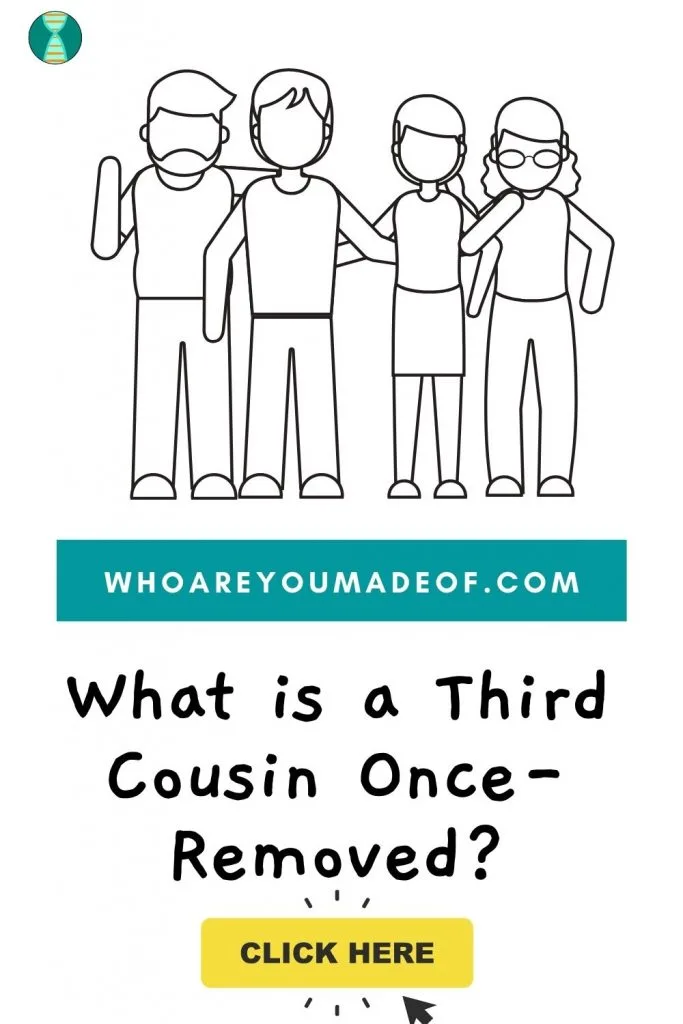If you are doing family tree research, you might stumble upon some unfamiliar terms. Cousins removed - what in the world? In this post, you will learn what a third cousin once-removed is, how many third cousins once-removed you might have, along with the best way to locate your third cousins.

What is the definition of a third cousin once-removed?
Third cousins share great-great grandparents. If two third cousins don't share the same number of generations of descent from the common ancestor, then they are third cousins "removed".
A third cousin once-removed is the child of your third cousin, or a third cousin of one of your parents (since in this case you would be the child of a third cousin).
How to figure out how many times removed your third cousin is?
The image below describes the steps that you will need to take to calculate how many generations removed you are from your third cousin.
In the case of third cousins removed, you will first need to figure out which cousin is closest (in generations) to the most recent common ancestor. Third cousins share great-great grandparents, so figure out which cousin is the fewest generations away from these ancestors.
Then, you will figure out how many generations of different there is between this cousin and the number of generations you (or your cousin is, depending on who is closer) are from these great-great grandparents.
If you are the closest, and the relative in question is the grandchild of your third cousin, then you and your relative are third cousins twice-removed. This is because your relative is two more generations further away from the common ancestor than you are.

How many third cousins once-removed do I have?
The exact number of third cousins that a given person could possibly have depends on so many things. How many people in the generations before them had children, how many children those people had, how many survived, and how many descendants they have (and how many of those people have surviving children).
With all of this said, most people have an average of 175 third cousins and 1570 fourth cousins. If you are at an age where you could potentially have children, then your children theoretically could have 1570 fourth cousins - children of your average of 175 third cousins - who would all be third cousins once-removed to you.
So, in theory, you could have approximately 1570 third cousins, once-removed.
Are third cousins once-removed really related?
How close are third cousins once-removed?
The generally accepted definition of a close relative is a third cousin. A third cousin once-removed is one generation further removed from the common ancestor, so technically in this would be the start of the "distant relative" range.
In practice, most people don't grow up knowing their third cousins, much less the children of their third cousins. Some families are a little closer and the family elders do a good job in getting the family together, and the children grow up knowing their second and third cousins.
On one side of my family, I know all of my second cousins, and some of us now have children, who also know each other. In other families, first cousins barely know each other.
It all just depends on the family!
Whether you want to view a newly discovered third cousin once-removed as distant or not depends on your own personal situation. Do you have time and space for more cousins?
If so, you are more than welcome to include your third cousin once-removed in your family circle.
How to find third cousins once-removed?
Why would you want to find some of your third cousins once-removed? If you are really interested in family history and genealogy, then you should absolutely consider doing a DNA test to find third cousins once-removed, or using more traditional methods.
You never know what kind of documents, photographs, family stories and other information they might have that can give you a more complete picture of your roots. Additionally, they might be able to learn from you - the best of both worlds.
Do a DNA test to find third cousins once-removed
There is a 12% chance that you share absolutely no DNA with a third cousin once-removed, but that means that there is a 88% chance that you do share genetic material with a third cousin once-removed. Another way to look at this is that if 100 third cousins once-removed do a DNA test, you will probably share DNA with 88 of them.
Use traditional genealogy to research third cousins once-removed
If you aren't interested in doing a DNA test, but you still want to see if you could get in touch with a third cousin, or a third cousin once-removed, you could consider building a family tree on Ancestry, or some other popular family tree building website.
You will be able to find other people who have your great-great grandparents in their family tree, and you can contact them to see their exact relationship to your ancestors. Eventually, you will find relatives this way.
Conclusion
I hope that this post helped you understand a little bit about what a third cousin once-removed is, who your common ancestor is, how many third cousins once-removed you might have, and how to track down some of those cousins to see what kind of information you might be able to share with each other.
If you have any questions about anything that I mentioned in this post, I would love to hear from you in the comments.
Thanks for stopping by!


